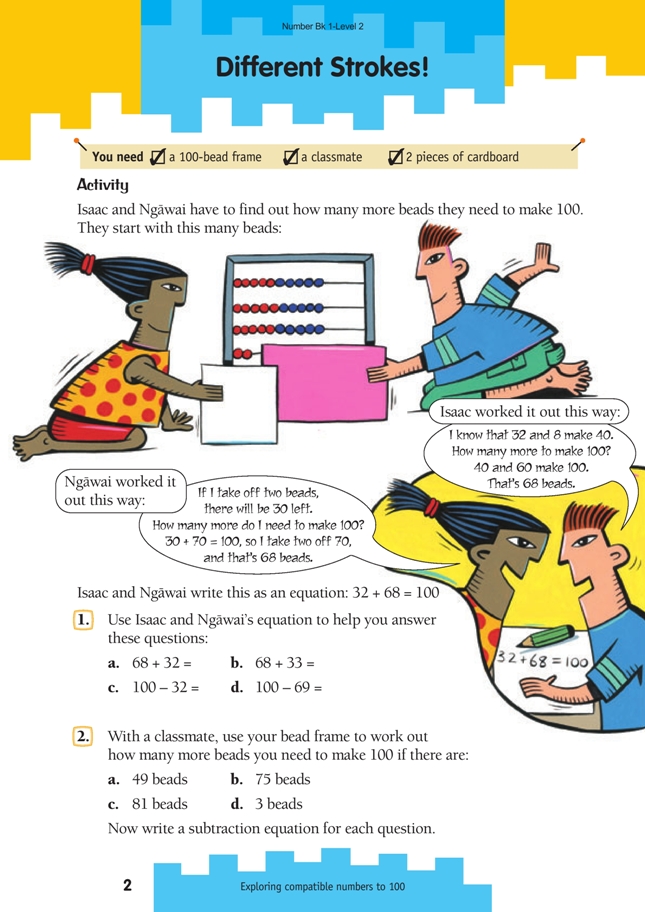This is a level 2 number activity from the Figure It Out series. It relates to Stage 5 of the Number Framework.
A PDF of the student activity is included.
Click on the image to enlarge it. Click again to close. Download PDF (229 KB)
explore compatible numbers to 100
FIO, Level 2, Number, Book 1, Different Strokes, page 2
100-bead frame
2 pieces of cardboard
classmate
This activity explores groupings within 100. The 100-bead frame, or Slavonic abacus, provides a concrete model of 100. Beads are arranged in 10 rows of 10 beads, with different -coloured groups of fives in each row. Different colours are used for the second 50 beads, which makes it easy to recognise groupings of 25 and 50.
Students who are exploring groupings within 100 should already be familiar with the groupings within 5, 10, and 20.
Although the emphasis is on groupings within 100, the students also need to use the groupings to derive answers that will be just above or below 100, for example:
32 + 68 = 100
so 68 + 33 = (68 + 32) + 1
= 101
Examples of the questions that the students could ask each other are:
100 – 49 =
81 + = 100
These problems extend the concept of reversibility. Reversibility refers to the way in which subtraction reverses the effects of addition, for example, 7 – 5 = 2 is the reverse of 2 + 5 = 7. Addition and subtraction problems have been deliberately presented together in this activity to help highlight their relationship.
To develop this work further, the students could modify this activity to work out how many more beads they need to make 50, starting with fewer than 50 beads.
Answers to Activity
1. a. 68 + 32 =100
b. 68 + 33 =101
c. 100 – 32 = 68
d. 100 – 69 = 31
2. a. 51 beads 100 – 49 = 51 or 100 – 51 = 49
b. 25 beads 100 – 25 = 75 or 100 – 75 = 25
c. 19 beads 100 – 19 = 81 or 100 – 81 = 19
d. 97 beads 100 – 3 = 97 or 100 – 97 = 3
